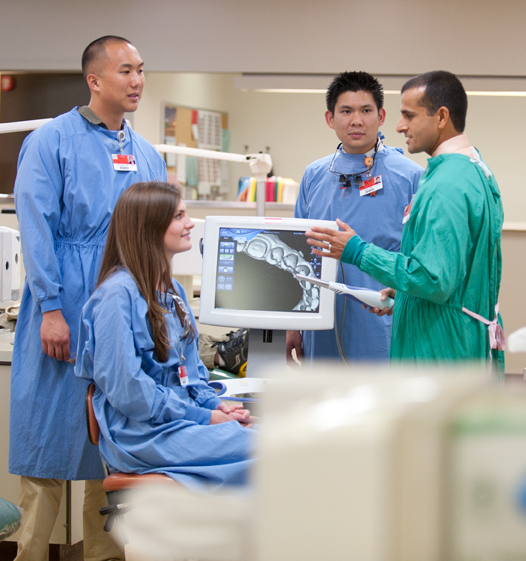Parag Kachalia was still a dental student at University of the Pacific when he realized that after graduating he would like to be a part-time dental school faculty member. So after graduation, Dr. Kachalia ’01 followed through with his plan and joined the dental school as a one-day-per-week faculty member in addition to seeing patients in private practice. This was the start of his evolving career as a dental educator.
About three years after joining the faculty, Kachalia was asked to consider taking the role of director of Preclinical Fixed Prosthodontics, one of the largest courses at the Dugoni School of Dentistry. After some deliberation he decided to accept the position along with a new commitment as a three-day-a-week faculty member.
“I never imagined I would have such a high level of faculty involvement, but I’m glad I took the path that I did,” says Kachalia. “Being an educator has made me a better practitioner, and being a practitioner has made me a better educator.”
Over the years, Kachalia’s commitment to the dental school has grown, but he has always maintained the private practice that he shares with his wife, Dr. Charity Duncan ’03, in San Ramon, California. He and Charity have started a family and Kachalia is quick to acknowledge that he’s able to be successful with his busy lifestyle due to the immense support of his family.
[pullquote]Something I love about Pacific is that we are willing to take calculated risks and reinvent ourselves when appropriate.[/pullquote]
Currently, he’s vice chair of preclinical education, technology and research in the Department of Integrated Reconstructive Dental Sciences, which he admits is wordy, but is an indication of the multiple hats he wears as a faculty member. He oversees his department’s simulation courses for first-year students who aren’t yet treating patients in clinic, and he also serves as the school’s point person for information on and implementation of new dental technologies.
Kachalia, along with his dedicated team of faculty, are working tirelessly to modernize the school’s preclinical curriculum. In recent years, the dental school has modified its curriculum to better cater to millennial learners who respond positively to interactive academic environments and personalized learning experiences. Students are now being asked to think critically about patient care and treatment plans, not just to memorize procedures and perform them.
“There has been fear surrounding changes to the educational model because our current model does work well, but we want to make sure we’re staying up-to-date with the way students now prefer to learn,” he says. “Today’s students are able to absorb vast amounts of information and correctly filter it down to what is important. Our role as faculty members is morphing from giving our students information to memorize to helping them understand where to go to find information and then teaching them to evaluate it critically.”
The technology side of his position is equally progressive. Kachalia is involved with the school’s investigation and decisions regarding new technologies, and he guides the school’s commitment to implementing them. He’s also made it a priority to ensure the dental school becomes involved with the process of helping companies develop and test new technologies, not just adopting them years after they hit the market.
“I want our school to be viewed as the place to go for information on new dental technologies and techniques, and I think we’re getting there,” he says. “We have a growing number of faculty members and school leaders who are interested in setting the bar when it comes to new technology in dental education. I view Pacific as a center of excellence, a center that allows us to lead the path for the profession, rather than reacting to it.”
Kachalia concludes, “Something I love about Pacific is that we are willing to take calculated risks and reinvent ourselves when appropriate. I am thrilled to be a part of that growth process.”
